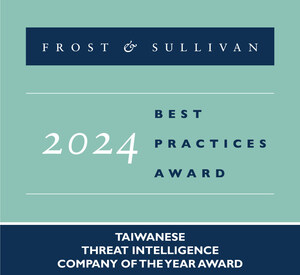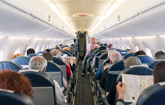Frost & Sullivan: Opportunity to develop a regional Business Aviation hub in Malaysia
Increasing costs of operation and high congestion at the existing business aviation hubs in Asia Pacific region offer an opportune setting for an airport in Malaysia to emerge as the next hub in the region
KUALA LUMPUR, Malaysia, Aug. 3, 2018 /PRNewswire/ -- The economic progress of Malaysia and a growing number of high net-worth individuals in the country is leading to a steady growth in the demand for business aviation. This coupled with the regional dynamics of the industry, wherein existing hubs such as Singapore's Selatar airport and Hong Kong International Airport are giving preference to commercial flights, present an ideal moment for Malaysia to capitalise.
As per a recent survey conducted by Frost & Sullivan among industry stakeholders in the Asia Pacific region, the Sultan Abdul Aziz Shah airport at Subang in Malaysia is the most favoured choice for the next business aviation hub in the region.
"Subang is already the most frequently used business aviation airport in Malaysia and it has potential to develop even further," said Nishant Dey Purkayastha, Consultant at Frost & Sullivan.
Frost & Sullivan estimates that the business aviation fleet owned and used by Malaysians, which stood at 51 jets in 2017, can potentially reach to 124 jets by 2030.
"However, the industry has several roadblocks that need to be mitigated in order to realize the full potential. Regulatory issues related to registration, financing and cabotage policy are major roadblocks. For instance, only 30% of the fleet based out of Malaysia are registered in the Malaysian registry. The others are registered in other countries. This hampers the domestic charter industry as the internationally registered jets cannot be used for domestic operations. Other hurdles are in the form of infrastructure related issues and operational issues," said Nishant.
The availability of a complete ecosystem, including charter operators, authorised maintenance centers, fixed-based operators and parking space, were key reasons that helped Singapore and Hong Kong to emerge as hubs for business aviation.
"Subang currently does have a decent ecosystem, with some leading global names such as ExecuJet and Hawker Pacific, as well as established local players like Smooth Route, Sapura Aero and Redland Aviation. However, some aspects of the value chain such as painting and modifications, flight simulation and training, and parts distribution and logistics are missing. Malaysia will need to attract investments to fill up the gaps and complete the ecosystem," he added.
Currently, Subang's annual business jet movement stands at around 3,200. The leading business aviation airports in Asia Pacific region are Beijing (9,000 movement), Hong Kong (7,250 movement), Shanghai (5,000 movement) and Singapore (4,900 movement). Subang's numbers are marginally ahead of Bangkok's Don Muang airport and Manila's Ninoy Aquino airport. As per Frost & Sullivan's analysis, if the issues in the ecosystem in Malaysia can be addressed, the annual business jets movement in Subang can potentially reach a figure of 9,299 by 2030.
Business aviation sector's contribution to the Gross Domestic Product (GDP) of Malaysia stands at 0.008% currently. On the other hand, developed countries such as the United States, Canada and United Kingdom typically have a contribution of around 0.20% of the GDP from the business aviation industry.
This provides immense potential for the industry to grow in Malaysia and at the same time create jobs and contribute to the economy. Currently, the industry contributes approximately 96 million Ringgit to the annual GDP and provides 636 person-years of employment. In the best case scenario, this can potentially grow to 342 million Ringgit in GDP contribution and 1,546 person-years of employment by 2030.
The development of the industry will require all the key stakeholders to work in tandem. While the Ministry of Transportation, the Civil Aviation Authority of Malaysia (CAAM) and Malaysian Aviation Commission (MAVCOM) will have to take the lead to ease the regulatory hurdles, Malaysia Airports Holdings Berhad will have to work in conjunction with agencies such as Malaysia Investment Development Authority (MIDA) to prospect and attract the right investors. Understanding the needs of the investors and coming with an appropriate investment package to seal the deals.
Nishant added, "Thailand, Philippines and Indonesia are some of the other regional players that can potentially look to develop a business aviation hub. But Malaysia's existing ecosystem is more developed and the industry players seem to hold a more favourable view of Malaysia. However, delays in taking steps in the right direction might enable to competitors to catch up."
About Frost & Sullivan
For over five decades, Frost & Sullivan has become world-renowned for its role in helping investors, corporate leaders and governments navigate economic changes and identify disruptive technologies, Mega Trends, new business models and companies to action, resulting in a continuous flow of growth opportunities to drive future success. Contact us: Start the discussion.
Contact:
Melissa Tan
Corporate Communications – Asia Pacific
P: +65 6890 0926
F: +65 6890 0999
E: [email protected]






Share this article